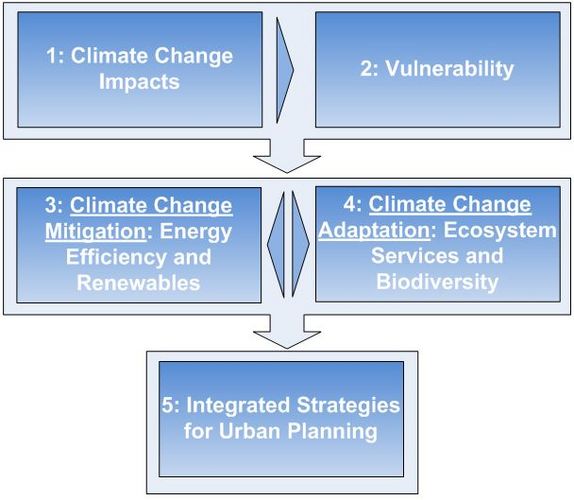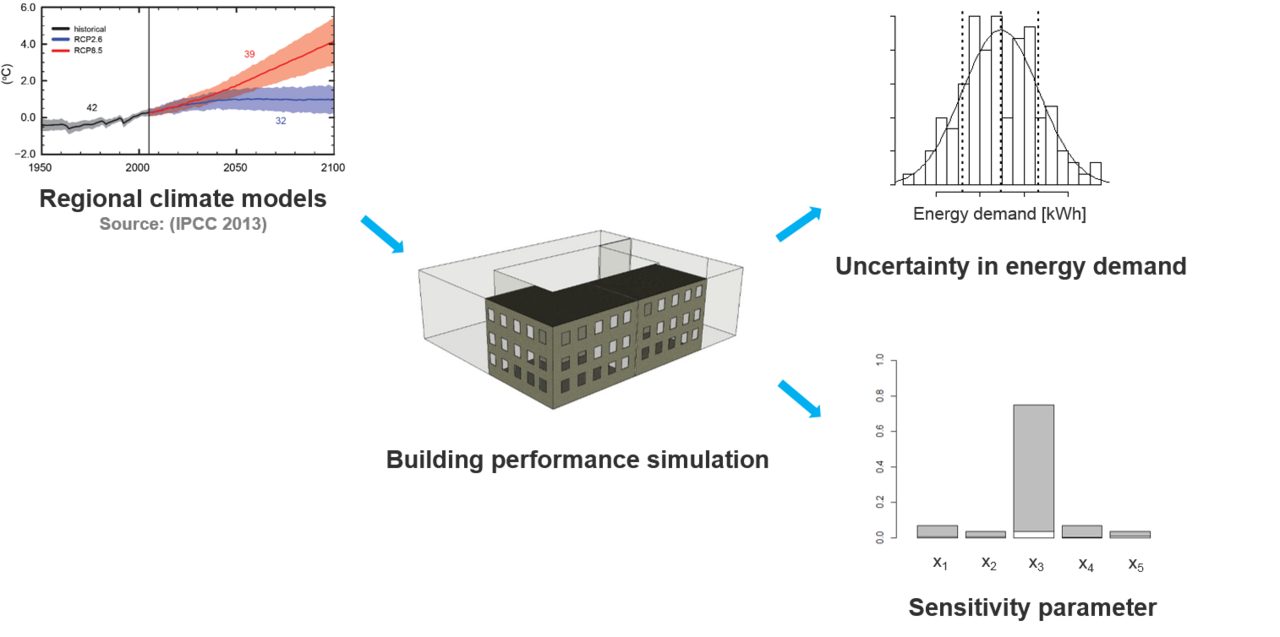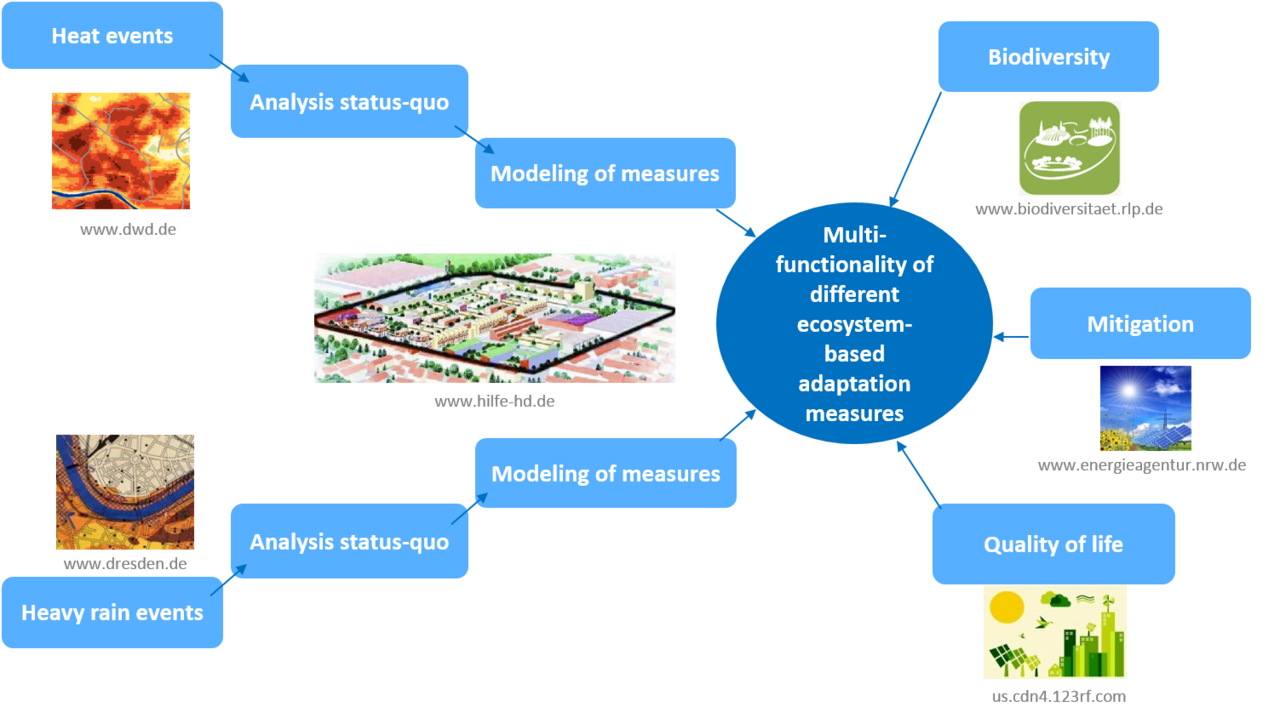Climate change will especially affect cities in the next years. Climate change impacts, e. g. extreme thermic exposure and extreme rain events, will occur distinctly across the cities. Strong influence will have among others different building types and materials, the grade of soil sealing, the amount of green infrastructures or thermal immissions by traffic and climate conditions.
Economic developments, changes of the population and other factors will change cities in the coming decades and affect climate change impacts on the level of urban quarters as well. In depth knowledge about size and location of climate change impacts on the level of urban quarters are therefore of great significance for climate change adaptation of humans, flora and fauna.
Adaptation to climate change must orient itself to the most vulnerable sectors. Vulnerabilities resulting from gradual climate changes and variability within and between cities have received far less academic attention so far than the effects of climate catastrophes. Urban areas are particularly vulnerable to climate change due to their high population and built densities as well as the density of economic, social and cultural activities. Due to this complexity, integrated studies are needed that are able to take different adaptive capacities at the city district scale into account.
In order to address these research gaps in Bavaria, the ZSK plans to implement an interview survey regarding adaptive capacity with various key actors in its case study partner cities as well as a household survey in its case study neighbourhoods regarding perception of climate change-related vulnerability.
Climate change has an impact on the future energy demand of buildings. This raises the question of whether current retrofit concepts are still the best solution for climate mitigation in the long-run.
The impact of climate change on the future building energy demand and the robustness of retrofit concepts is determined with the help of building performance simulation. Through simulations the uncertainty and the influence of parameters like U-value on the total energy demand are quantified. These results form the basis for the development of “climate proofed energy concepts”. The impact of climate adaption measures like green infrastructure are also considered in these concepts.
Urban spaces are going to be affected by an increase of extreme heat and heavy rain events. By implementing measures such as an increase in the share of green space, cities can adapt to these impacts. Such ecosystem-based adaptation measures are analysed at the city neighbourhood scale to assess their contribution to adaptation (namely the regulation of the microclimate and regulation of surface runoff) as well as their synergies for biodiversity, climate mitigation and cultural ecosystem services.
The crucial role of local governments in implementing measures for climate protection and adaptation to global warming has been frequently underlined. While the goals of energy and climate strategies are set at the (inter-)national level, it is the regional and local level that needs to translate these goals into action.Framed by climate and energy targets adopted at the EU and national level, over the past years, regional and local governments have defined their own strategies to reduce CO2 emissions (climate protection) and to adapt to the changes brought about by global warming (climate adaptation). To date however, it has not been explored how these local strategies are actually implemented. Do local governments have sufficient capacities and competencies to manage this energy transition?
A comparative analysis, based on qualitative expert interviews, examines within the framework of the project the possibilities that Bavarian cities face in the implementation of climate-relevant goals. The focus is on the question of whether the scope for action is sufficient to implement these goals at the municipal level. On the basis of three case studies of Bavarian cities, the internal administrative structures (actors, resources, responsibilities) are compared in order to identify the most frequent hurdles and the success factors.



